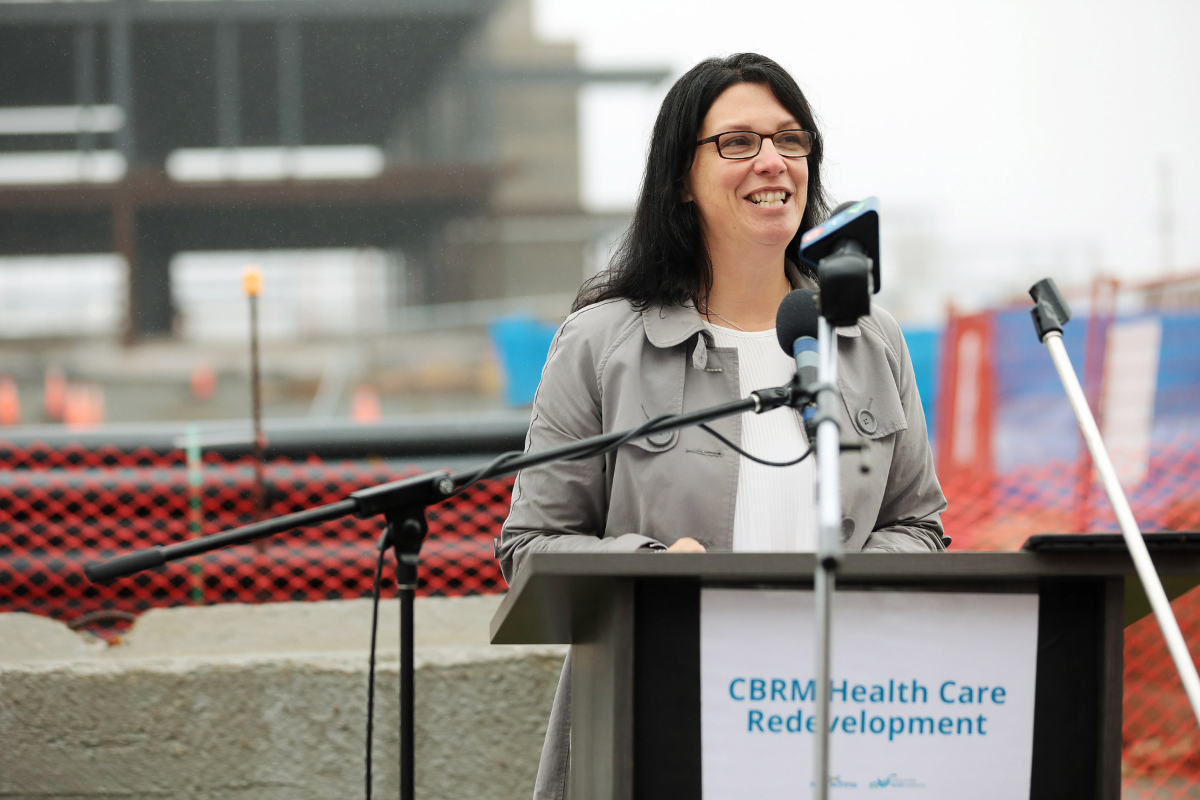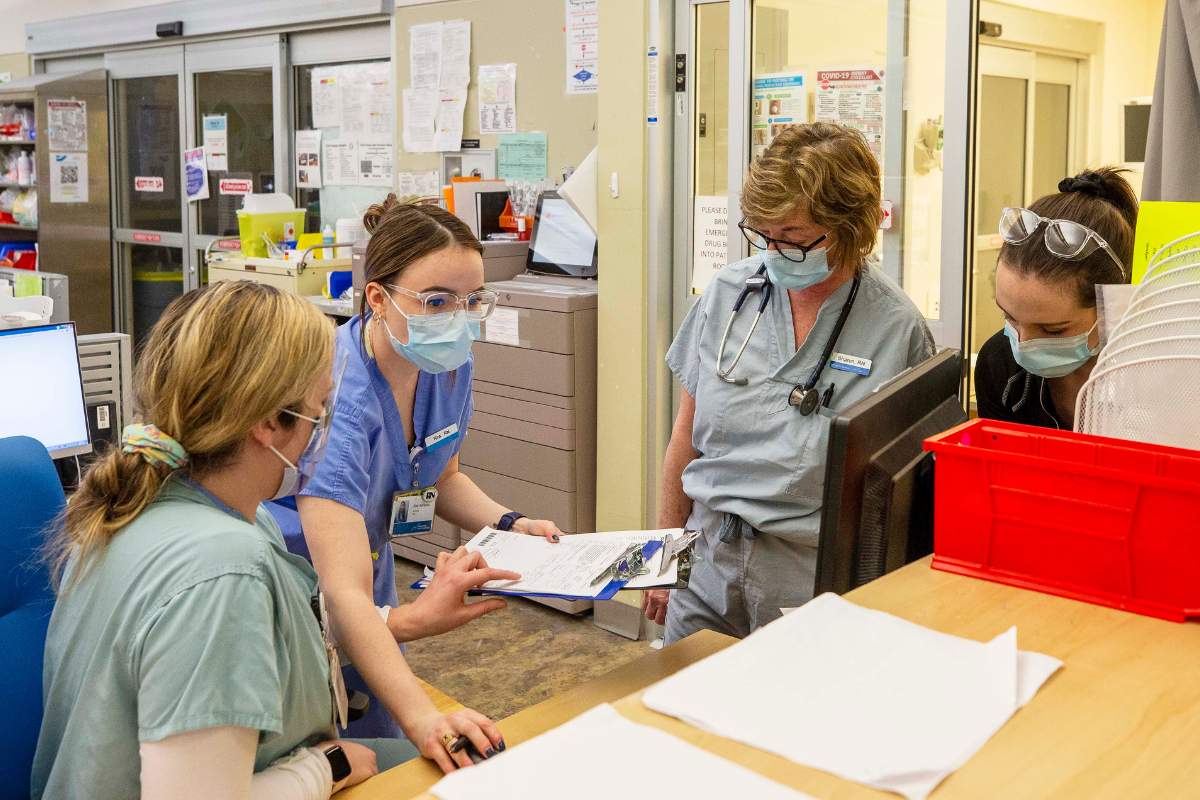While the challenges facing Nova Scotia’s healthcare system are not unique to this province, the solutions its leadership teams are proposing might be, according to two people who are working daily to enable better access to care and to lighten the burden on healthcare workers in Nova Scotia.
As of Feb. 1, there remain 153,373 people on the Need a Family Practice Registry. That number equals more than 15 per cent of the province and presents a more than two per cent increase since January. The picture this paints feels far from positive, but Nova Scotia Minister of Health and MLA for Antigonish Michelle Thompson says these are not the only numbers Nova Scotians should be following. She says that the work she and the province have undertaken to “modernize Nova Scotia’s healthcare system” inspires her daily, as someone who has worked alongside and within the healthcare system since the age of 15.
“Healthcare has been my whole life, and it’s a privilege for me to serve in this role. This is a time of incredible investment, a time of innovation, a time of modernization. It really is an inflection point in health,” she says. “It’s not to say there aren’t challenges. Over my career, a constant restriction of budget and cost control, without really looking at the entire system in the wholeness of it, has felt difficult. But as we are modernizing our system, many positive things are happening in Nova Scotia.”

More access points to care
With the party having run on a platform to fix healthcare, Thompson says she and other members of Premier Tim Houston’s PC Party have worked for more than two years to do just that, placing an emphasis on informed, efficient decision-making processes and a data-driven approach to healthcare system adjustments and reducing red tape.
Thompson says this work has included the creation of new access points where Nova Scotians can access care, which include virtual care and mobile primary care clinics, which travel to remote and/or underserviced areas across Nova Scotia. In January alone, 1,353 visits were completed at these mobile clinics. Thompson says that altogether, these new access points have generated more than 60,000 appointments per month in the system and that Nova Scotians waiting for a family doctor are given access to virtual care.
“We know virtual care is not for everything, so we’ve created a system behind this that if a provider feels you need to be seen, we move to in-person care centres, mobile clinics, or pharmacy access points,” she says. “We look at human resources, innovation and technology, and use data analytics to inform decision-making throughout the system.”
With specific regard to healthcare staffing, Thompson says it’s no secret that Nova Scotia is facing large, ongoing struggles with recruitment. Thompson says that this challenge exists within a broader context of staffing shortages across healthcare systems in Canada, and around the world. It’s a problem that’s not new to Nova Scotia, according to Tara Sampalli, Senior Director, Implementation Science and Evaluation, and Global Health Systems Planning on the Research, Innovation and Discovery team at Nova Scotia Health.
As she and the hub team work to transform healthcare via evidence-based and tested solutions, says that as people think about healthcare within the context of the COVID-19 pandemic, issues like recruitment and access to care—and the acute impact of both in rural Nova Scotia—returned to the forefront due to further strain placed on them during the pandemic. But she says the pandemic has also shown how Nova Scotia is solving some healthcare challenges with innovative solutions with outside-the-box thinking.
“During the pandemic, we thought about care away from hospitals, with virtual and digital services offered. I think it’s all for the right reasons, that people now expect care in different ways,” she says. “I feel like some challenges we are continuing to address, like surgical wait times, but we’re also thinking about diversion away from hospitals towards other points of access.”

Data-informed improvements
This increase in points of access has also resulted in increased scopes of practice for pharmacists, which Thompson says has amounted to 95,000 people being seen for assessments between February and December of 2023. And as these assessments happen, Thompson says data is collected from these assessments and helps inform where more primary care services are needed.
Thompson says that navigating these primary care access points happens most easily from the new YourHealthNS app, which launched last fall. When location services are enabled, the app connects users via its ‘Get Care’ function to care available within the area they’re located in. And in February, Thompson says the province announced 12,000 patients had signed on to help trial practices that will test sharing access to patient information, and enable virtual access to health records.
“The feedback is that people want access to their own information. Imagine the agency that would come with having your health record in your hand. Typically, we’d say you have to return to your family practice to receive results. But now, they arrive in your hand,” says Thompson. “This is just one example of how technology and innovation are modernizing our healthcare.”
Sampalli says these technological improvements are greatly improving access to care. She says since virtual care was offered to those without primary care in 2021, testing and trials were run to determine whether it would fit within the continuum of care in Nova Scotia. Virtual care has since grown across the province to include virtual emergency and urgent care services, and to everything being available from a single point of access on YourHealthNS. But even as the head of the innovation hub, Sampalli says these virtual access points are only one factor in solving healthcare delivery challenges in Nova Scotia.
“From evidence, we’ve learned virtual care can only do so much. It has to be designed to implement in-person solutions as well,” she says. “And as we do this, we continue assessing needs. Digital literacy, for example: do people understand what is being offered? Privacy is a consideration as well. We also think about equity in access: is everybody able to access the technology needed to access these services? With that in mind, we’ve been able to bring virtual care into libraries and community centres if people don’t have access to a device or the internet.”

Test and try
What’s commonly known as trial and error to the general population is referred to as test and try within the medical research community, according to Sampalli, who says it’s a huge part of work at the Health Innovation Hub. She says that a focus on research and innovation allows those at the hub to think about and find best-practice models and leading solutions, as well as partners who can bring their solutions and evidence to a Nova Scotia context. Then, she says once that context is applied to those models and solutions, and they begin to be understood within community contexts, evaluation in real time can begin.
Sampalli offers mobile care as an example and solution to replace traveling to emergency rooms when no primary care is available. She says that as historically, particularly in rural Nova Scotia, people were directed to emergency rooms when they had no access to primary care, it takes time for new offerings to be adopted, and to become the norm in care. But as those new solutions begin being adopted, she says bottlenecks are reduced.
“It’s about changing the way culture shifts, and where to go when you have a need. You’re almost creating ways to divert traffic, then bringing them closer to their own homes and communities for those access points,” says Sampalli. “Our ability to continue to transform the healthcare system is everywhere. What we do in one place has an impact somewhere else. We have to continue to think in that way.”
And those improvements will, in turn, help drive recruitment, according to both Sampalli and Thompson. As the province works with partners like Google and Apple, and as hospitals like the QEII Health Sciences Centre pave the way with leading robotic solutions in Canada, the healthcare system begins attracting practitioners into the province who stay here, and who then help attract other young, new talent.
Another element that both Sampalli and Thompson say is crucial to not only recruitment but also retention is the reduction of red tape. Both see these technological advancements as being key to that process and as being leveraged to create new efficiencies and eliminate redundancies that cost healthcare providers time.
“Paperwork, for example, is an area where technology can be a key enabler. Even robotics, listening to surgeons talk about it, you’re thinking about patient care, but surgeons also talk about retention as people feel excited about this technology, its efficiency, and its ability to help them work longer without injury,” says Sampalli. “People are noticing Nova Scotia, and this creates excitement. Part of it is now creating inroads into leading partners who will work with us. Providers and teams are excited by these opportunities: this attracts talent and creates excitement.”

Tracking progress
Thompson says that as the province remains committed to fixing healthcare in Nova Scotia, its progress to date is tracked publicly on the Action for Health website. In addition to family practice registry and recruitment data, this website also shows surgical wait time data. She says that as Nova Scotians feel frustrated by the current challenges they face with accessing healthcare, they can use this tool to see the work being done to find solutions.
Thompson says that as she and her team continue this work, she feels excited by “the innovation we are seeing.” She says problems—and especially those faced by frontline healthcare workers—like day-to-day staffing difficulties can feel heavy, but that healthcare in Nova Scotia will be heading in a new direction as her team continues to find and enable new long-term solutions to healthcare in Nova Scotia.
“There is no stone unturned, and we have an urgency to deliver. I know things are not perfect yet, but I would encourage people to be engaged, to download the YourHealthNS app, and to go to that website,” she says. “We’ve been very accessible in terms of being a government in leadership. Please give us your feedback, and know we are working hard. It will not happen overnight, but we have seen significant movement. There are bright lights at the end of the tunnel.”
< Back to Articles | Topics: Cover story

